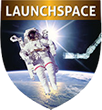Course Details
Course Summary
This course explores the technologies required for the successful design of moving mechanical assemblies in the space environment and offers a detailed look at many of the key components common to most mechanisms, such as ball bearings, motors and feedback devices. With this background, the high-performance materials required for operation in space are reviewed, emphasizing compatibility with the space environment and offering some background in the metallurgy, chemistry, and fabrication of those materials. Examples of some of the many types of mechanism will be included for illustration. In addition, the mechanisms relationship and interface with other vehicle systems will be explored, as a mechanism usually becomes an important part of the vehicles structural, thermal, contamination, survivability, and pointing subsystems. The course includes design and analysis examples to demonstrate principles involved in understanding how mechanisms should work, and how design margins should be evaluated during the evolution of a program. Finally, some important underlying techniques, such as reliability analysis and digital simulation, are covered.
Course Materials
Include the handbook Space Vehicle Mechanisms: Elements of Successful Design, edited by P.L. Conley, plus notes and reference materials.
Who Should Attend
This course is intended for mechanisms engineers who wish to expand their knowledge and for system engineers and program managers who need a working knowledge of mechanism design and application.
What You Will Learn
Understanding a mechanism requires a working knowledge of dozens of specialties, such as motors, lubrication, structural metals, and feedback devices. You will acquire this knowledge and become conversant with the many components, materials, and technologies that go into a successful design. In addition, successful application of a mechanism requires a familiarity with the various vehicle subsystems of which a mechanism is often a crucial part, such as the pointing, contamination or structural system. The design and analysis of these subsystems, and their interfaces with the mechanism, are introduced.
Course Outline
- Introduction.
Overview of how all types of mechanisms are used in spacecraft. - Pointing Subsystems.
Design and requirements considerations common to pointing systems. High and low precision consideration for bearings, motors and feedback devices. - Motors.
Stepper motors, DC brush and brushless motor characteristics and behavior. Different motors for suitability against various mechanism applications. - Feedback Devices.
Optical encoder, inductosyn, resolver and potentiometer characteristics and precision. Selection of feedback devices for suitability against various mechanism applications. - Bearings and Gears.
Fundamentals of high-precision ball bearings and proper lubrication techniques for long life. Overview of gears with a focus on harmonic drives. - Lubrication Fundamentals.
Wet and Dry Lubricants. Fundamental behavior, performance and life characteristics of liquid and dry lubricants for space. Different lubrication choices for suitability against various mechanism applications. - Release Systems and Deployment Systems.
Pyrotechnic and non-pyrotechnic release mechanisms operation and characteristics. Deployment system elements and basics. - Rotating Signal and Power Transfer Systems.
Slip ring characteristics, operation and behavior. - Electrical Interfaces.
Interfaces between mechanisms and the spacecraft to give the mechanism designer insight into the implications of important interfaces. - Structural Dynamics.
Spacecraft and general structural dynamics to give the mechanism designer insight into the structural aspect of mechanisms and into interfaces with larger spacecraft structure developments. - Structural Metals.
Common structural metals for mechanisms including stainless steel, titanium, beryllium and others. Characteristics of most interest for mechanisms. Materials for springs and bearings. - Composite Materials.
Common composite materials for mechanisms and characteristics of interest. - Reliability and Simulation Techniques.
Mechanism simulation techniques and reliability assessment methods. - Contamination.
Contamination considerations between mechanism and satellite. - Radiation and Survivability.
Radiation environment and survivability implications for the mechanisms.
Instructor

Bill Purdy has 22 years of hands-on experience in the space engineering field with wide-ranging involvement in both spacecraft mechanisms and systems engineering disciplines. Mr. Purdy has been one of the leaders of the space mechanism industry’s transition from explosive release mechanisms to non-explosive devices. His involvement in numerous space endeavors includes key roles on over 25 successfully flown spacecraft, work on over 30 flown mechanisms including gimbals, release mechanisms, deployables and many other types of mechanisms. As an educator and space industry consultant to both government and industry, Mr. Purdy applies this broad experience to bring out a clear understanding of the space mechanisms, definition, resolution and integration of mechanism requirements and their relationship to the overall system program success. Mr. Purdy was the Associate Editor of the industry-standard handbook Space Vehicle Mechanisms – Elements of Successful Design and the author of the chapter on non-explosive release mechanisms. He has published seven Aerospace Mechanisms Symposia Papers and was the 1999 winner of the Herzl Award. Mr. Purdy holds a BSME from the University of Maryland.
